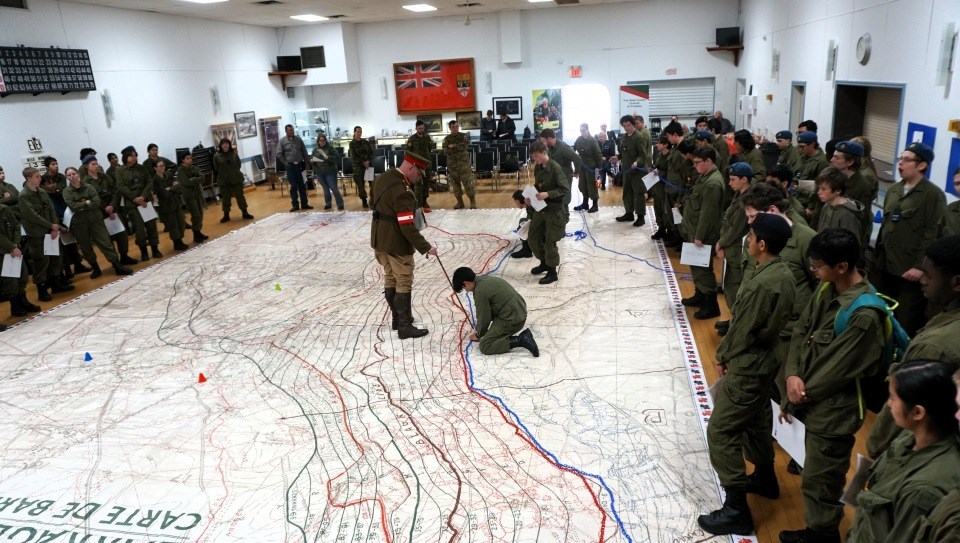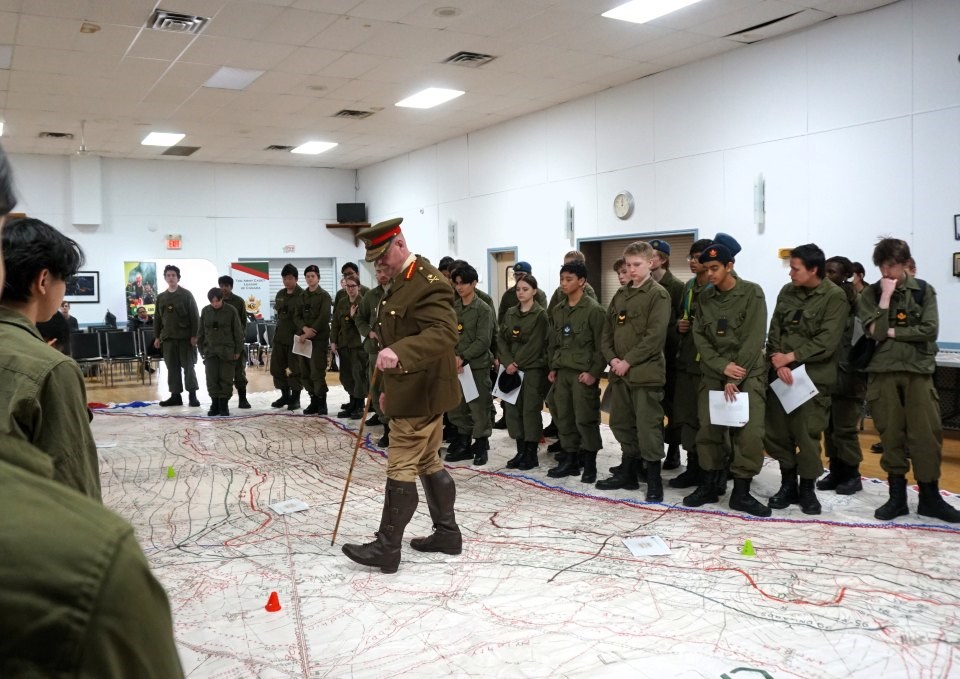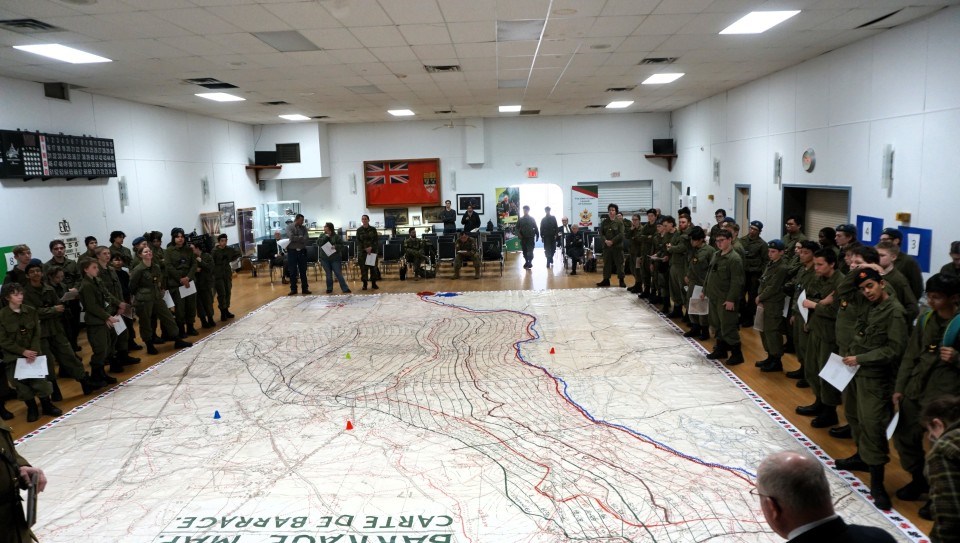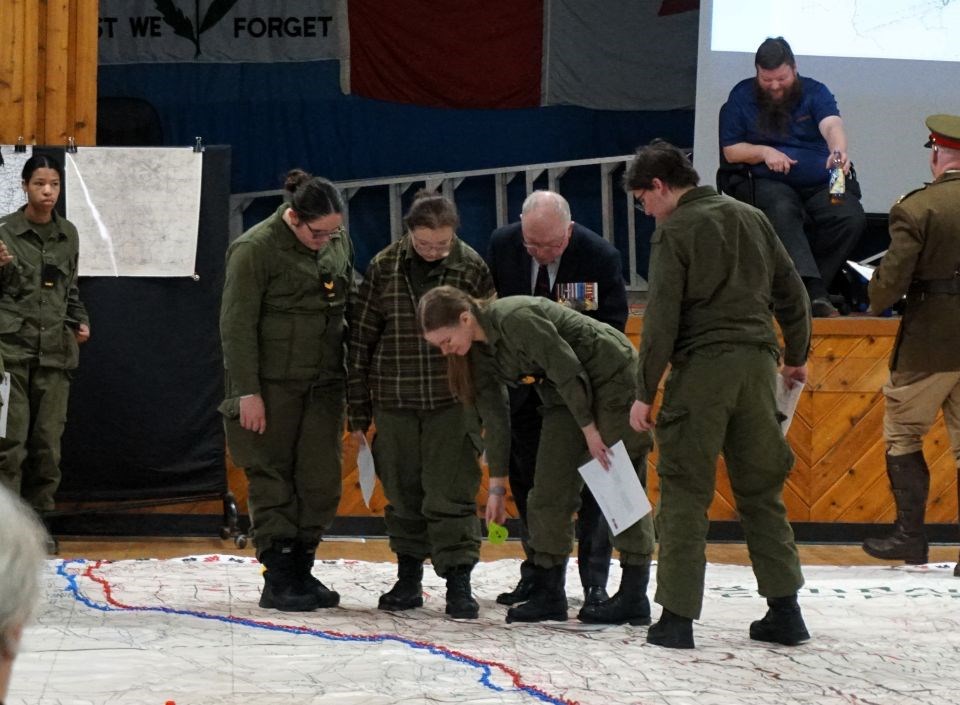ESTEVAN — Over 90 air and army cadets from across Saskatchewan took a powerful journey back in time during the Vimy Remembered interactive presentation held at the Royal Canadian Legion Estevan Branch #60. Led by Capt. Craig Bird, the session brought to life the Battle of Vimy Ridge - a milestone moment in Canadian history - through hands-on learning, group exercises and vivid storytelling.
Cadets from Regina, Moose Jaw, Melville, Yorkton and local Estevan units gathered to not only hear about the April 1917 battle, but to experience it in a way that bridged over a century of time.
Throughout the morning, Bird was dressed as General Sir Arthur Currie, who “was the one that came up with the master plan to train all of the Canadian troops and put forth some of these new and innovative ideas that hadn't been done before to train the Canadian troops to have a higher likelihood of success.”

For the event, Bird took on the role of historical interpreter, explaining the planning and execution behind the Canadian corps’ assault on the German-held ridge in France. Cadets stood around a massive floor map – an authentic replica of the First World War battlefield map – and were divided into groups representing the four Canadian divisions. Using coloured chains, pylons and historical trench maps, they plotted division movements and tracked key advances made between April 9 and 12, 1917.
Bird explained how Vimy Ridge had been transformed into a nearly impenetrable German stronghold, reinforced with deep trenches, tunnels, machine gun nests and artillery.
“Germany had captured the ridge early in the war and transformed it into a strong defensive position,” Bird said.
Previous Allied assaults had failed, costing hundreds of thousands of lives. The Canadians’ success was no accident, he emphasized; it was the result of innovation, intelligence and intensive training.
“They trained. That’s what they did for four months before the battle,” Bird told the cadets. “You wanted to keep those men alive as best as you could, so what do you do? You train.”
He described the implementation of a “creeping barrage” – a tactic where artillery fire moved forward in timed intervals just ahead of advancing infantry.
“The artillery would keep the Germans in their dugouts,” Bird explained. “And as they advanced, the artillery would advance. You had to have very high-disciplined troops to be able to do that.”
Cadets also learned about the harsh realities of trench warfare, including trench foot, unsanitary conditions, constant shelling and frigid weather.
“The winter of 1916-17 was the coldest in written memory in France and in Flanders,” Bird said, recounting soldiers’ struggles in wet, muddy trenches and freezing conditions.
In a hands-on exercise, cadets used the large-scale map to place markers on significant locations such as Petit Vimy, Hill 145, Vimy itself and other key objectives during the battle. They were guided through how terrain affected movement and how steep elevation near Hill 145 made the Fourth Division’s task especially deadly.
“The fourth Canadian division's objective was Hill 145, the highest and most important feature on the whole ridge,” Bird noted, detailing the brutal fighting required to secure the position.
The educational session concluded with a reminder of the human cost: more than 3,500 Canadians killed and about 7,000 wounded in the span of just a few days. The battle is widely viewed by historians as a defining moment for Canada’s national identity.
Following the presentation, cadets marched to Estevan’s cenotaph and Soldiers’ Tree Monument to honour the local soldiers who served and sacrificed in the Great War. The act of remembrance brought full circle the history they had just explored, connecting the names carved in stone to the battlefields studied on the map.
“Vimy Ridge symbolizes both the bravery of Canadian troops and the impact of World War I on Canada,” Bird said in a post on social media, promoting the event. “Commemorated annually on April 9, Vimy Ridge Day reflects on the sacrifices and achievements of Canadian soldiers.”







